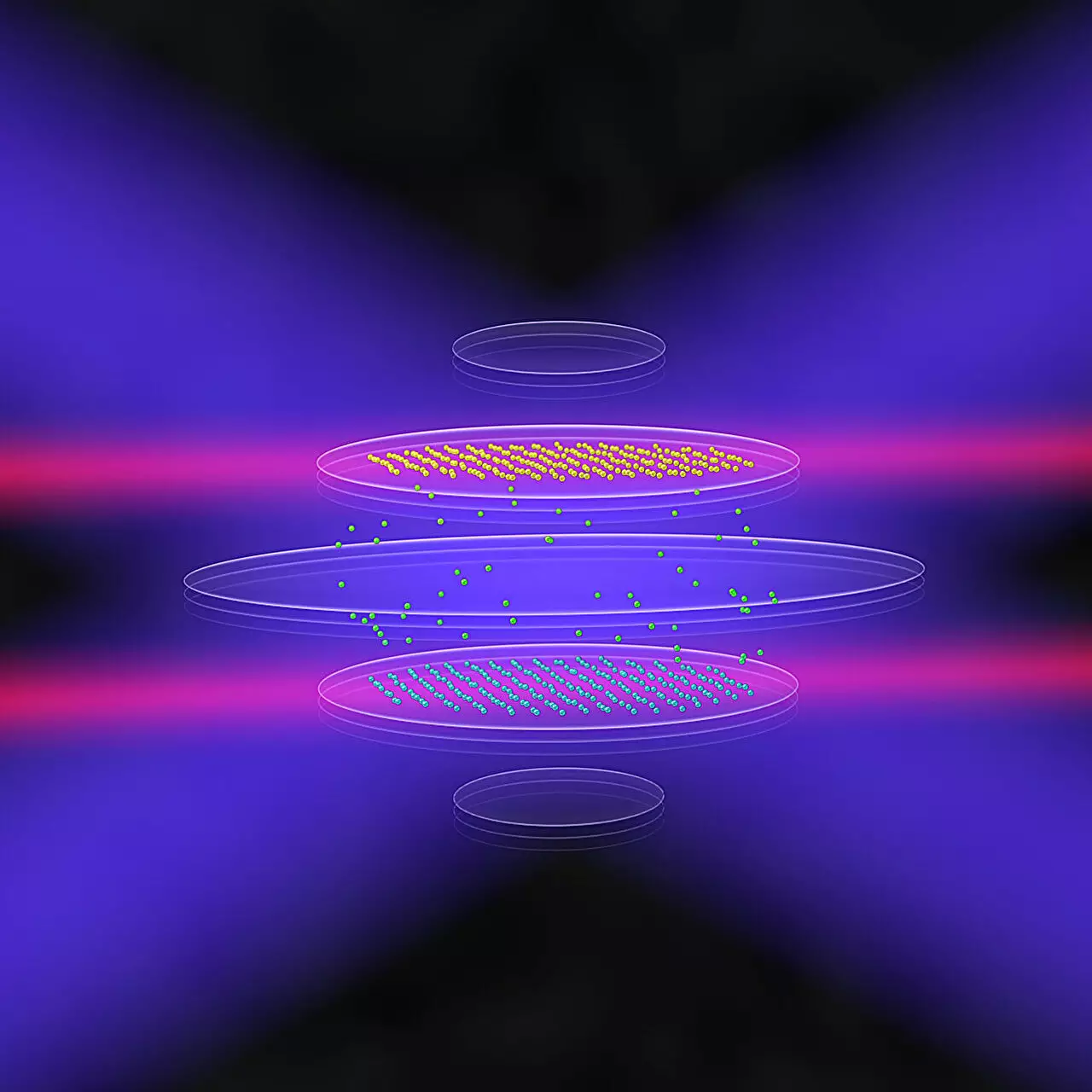Quantum technology continues to pave the way for revolutionary advancements across various fields, particularly in computing and sensing. Among the most promising platforms in this domain are trapped-ion systems, which leverage ions or charged atoms constrained by electric and magnetic fields to execute complex quantum operations. While these systems have proven efficient in one-dimensional chains and two-dimensional planes, a crucial limitation has been the difficulty in scaling them into three-dimensional structures. Such structures are essential for extending the functionality and computational power of quantum devices. Researchers from India, Austria, and the U.S. have embarked on a groundbreaking initiative to overcome this challenge, promising a rich domain for future quantum advancements.
Although the appeal of trapped ions as quantum bits or “qubits” is significant due to their high controllability, current systems face daunting challenges. The one-dimensional and two-dimensional configurations, while simplistic and easier to manage, inherently limit the complexity and capacity of quantum devices. Attempts to construct three-dimensional ion arrangements have been thwarted by stability issues, as well as difficulties in maintaining control over the ions as they are organized in more sophisticated architectures.
Researchers have long envisioned a future where these ions could exist in stable three-dimensional formations, enhancing their functionalities. However, the intricacies of manipulating multiple layers of ions simultaneously created a significant hurdle. Nonetheless, a dedicated international team has developed strategies to address these obstacles, paving the way for a new era of quantum hardware.
In an article published in *Physical Review X*, the collaborative effort led by researchers from the Indian Institute of Science, JILA, and NIST focuses on optimizing the electric fields that confine the ions. By sensibly modifying these electric fields, they demonstrated that stable multilayered structures could be achieved, enabling exciting new possibilities for the exploration of complex quantum phenomena. The team’s approach aims to exploit Penning traps, which have long been known to store a significant number of ions in organized formations.
“The ability to trap ions into two or more spatially separated layers enables the exploration of numerous phenomena relevant to quantum information science,” explained Ana Maria Rey, a prominent physicist involved in the study. This newfound capability could usher in developments in topological chiral modes and quantum teleportation, while enhancing precision in measurements of varying fields.
Penning traps have emerged as a key component in this research, primarily because of their capability to organize large numbers of ions into structured arrays. Historically, these traps facilitated the formation of two-dimensional layers or rounded three-dimensional shapes. However, the researchers’ modification of the electric field allowed them to develop a bilayer crystal structure—a significant leap forward in the field. The bilayer configuration shows promise for not just stabilization under controlled conditions, but also hints at the possibility of extending the concept to create additional layers.
“Our goal was to stimulate the ions into forming these multilayered structures, and our simulations provide strong evidence that it can be successfully achieved,” noted Samarth Hawaldar, the lead author of the paper. Such advances could revolutionize how ions are utilized in quantum applications, including but not limited to sensors and computational devices.
The transition from two-dimensional to three-dimensional structures represents a significant leap in quantum device functionality. Enhanced bilayer configurations could unlock new pathways for quantum entanglement, allowing for larger, distance-separated systems—a highly sought-after capability in quantum hardware development. Athreya Shankar, another key researcher, reinforced this point, asserting, “The capability to interconnect substantial systems separated in space opens avenues for previously unattained quantum functionalities.”
Moreover, the innovations facilitated by multilayer traps could lead to enhanced measurement precision and noise reduction, factors critical in the pursuit of new scientific discoveries. For instance, the normal modes of ions in these bilayers could allow the research community to replicate behaviors observed in electrons under strong magnetic fields within a controlled environment, driving new insights in physics.
As the partnership between researchers across borders strengthens, the potential for groundbreaking discoveries in quantum technology deepens. The drive to implement three-dimensional stacking in ion traps could help address some of the existing limitations facing quantum computing. If these experimental techniques yield positive results, it could revolutionize the paradigms of quantum architectures and lead to more scalable systems.
Undoubtedly, as technology advances, the implications of multilayered ion traps will continue to resonate across various sectors, marking a pivotal moment for researchers and industries alike. This journey is not merely about realizing the capabilities of trapped ions; it represents the tireless pursuit of knowledge and the quest to harness quantum phenomena to transform our understanding of the universe.


Leave a Reply